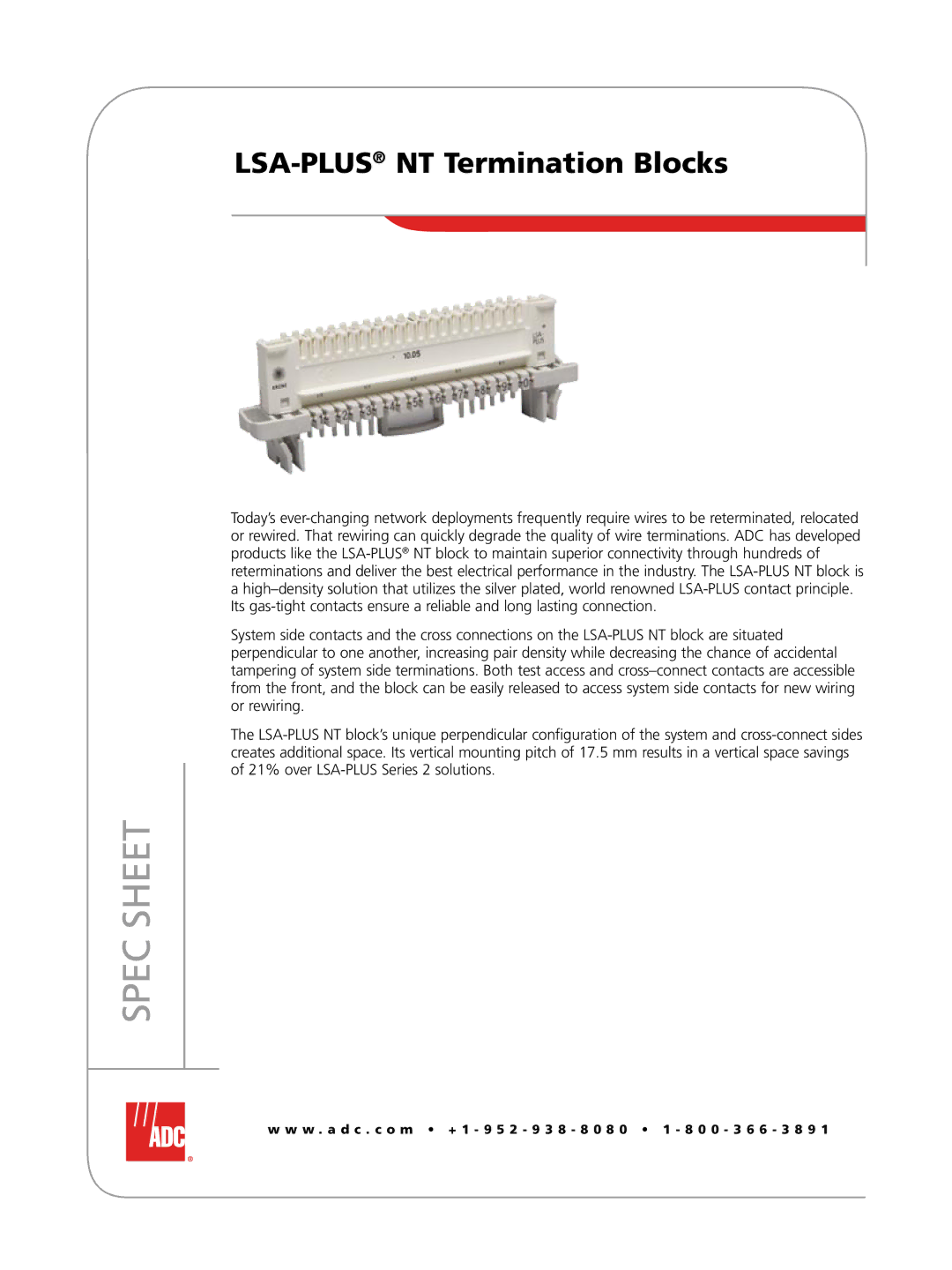NT specifications
ADC NT, or Analog Digital Converter Network Technology, is a cutting-edge concept that integrates analog and digital signal processing for a wide array of applications. This technology enhances the ability to convert and handle analog signals, making it essential in modern electronics, telecommunications, and audio processing.One of the main features of ADC NT is its high-resolution conversion capability. Traditional ADCs often struggle to provide the precision required in high-demand applications. However, ADC NT incorporates advanced algorithms that facilitate more significant bit depths, enabling clearer and more accurate signal representation. This characteristic is particularly beneficial in fields such as medical imaging and high-fidelity audio, where every detail counts.
ADC NT also incorporates advanced noise reduction technologies. In an environment where signal integrity is paramount, this feature ensures that the resultant digital signal reflects the true nature of the input. By employing techniques like oversampling and noise shaping, ADC NT can significantly minimize distortion and enhance overall performance.
Another characteristic of ADC NT is its real-time processing capability. Unlike older generations of ADCs that relied on batch processing, ADC NT allows for instantaneous signal conversion, making it suitable for applications that require immediate feedback, such as in automated systems and dynamic signal processing. This is made possible through enhanced chip architectures and faster semiconductor materials that allow for lower latency operations.
In addition to these features, ADC NT often integrates seamlessly with digital signal processors (DSPs) and microcontrollers. The ability to interface easily with various digital systems means that ADC NT can be employed in diverse applications, from consumer electronics to sophisticated industrial machinery. The design flexibility offered by ADC NT provides developers with the tools needed to innovate rapidly while maintaining performance integrity.
Furthermore, power efficiency is a critical aspect of ADC NT. With the increasing demand for portable devices and IoT solutions, maintaining low power consumption while ensuring high performance has become essential. ADC NT achieves this through innovative power management techniques and optimized architecture, allowing devices to function efficiently without compromising on output quality.
In summary, ADC NT stands out with its high-resolution capabilities, advanced noise reduction, real-time processing, seamless integration with digital systems, and power efficiency. These characteristics make it a pivotal technology in the evolving landscape of electronics, paving the way for more sophisticated and capable systems across multiple industries.

